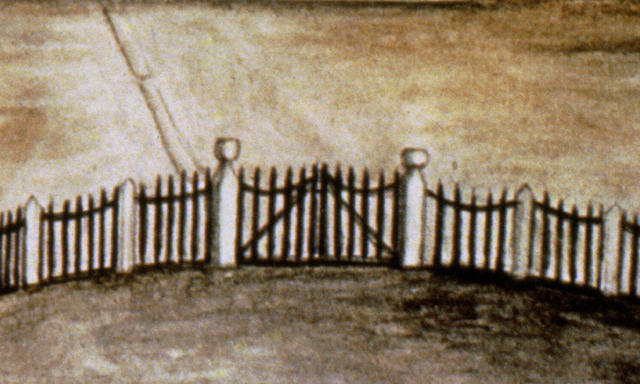
Finding precedents for the unusual paint scheme found on the fence in the de Neuville watercolor proved to be even more difficult. Because fences deteriorate quickly, very few examples of early-American fences survive and little is known about how they were painted. Fortunately, agricultural reform literature printed in England includes information on how fences were finished in the late 18th and early 19th centuries. Because the United States was still heavily influenced by English fashions at this time, English sources remain relevant to the Early Republic period. After reviewing this literature two types of dark fence paints were found. Tar was one of the coatings mentioned and would have produced a dark color similar to the one seen in the watercolor. Unfortunately, tar was also a very low status paint and it would have been strange to find it on the fence fronting a high status house like Montpelier. However, a second dark color, called "invisible green" was also recommended by English agricultural and gardening advocates.

©Musée franco-américain du château de Blérancourt
|
|
A detail of the fence and gate taken from Baroness de Neuville's watercolor. |











